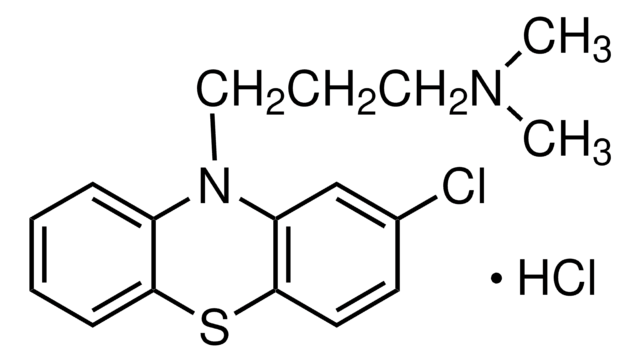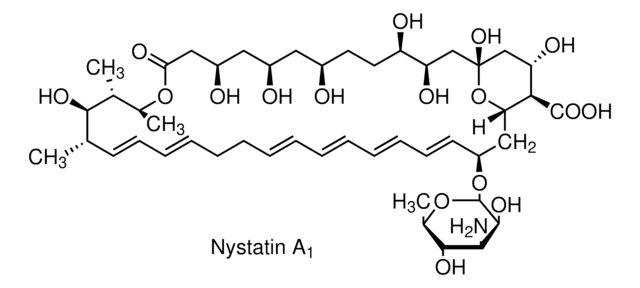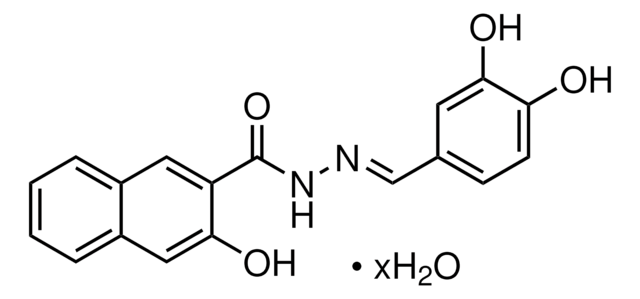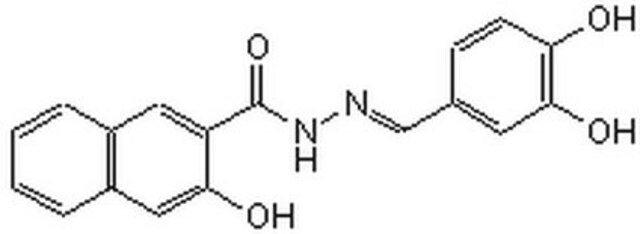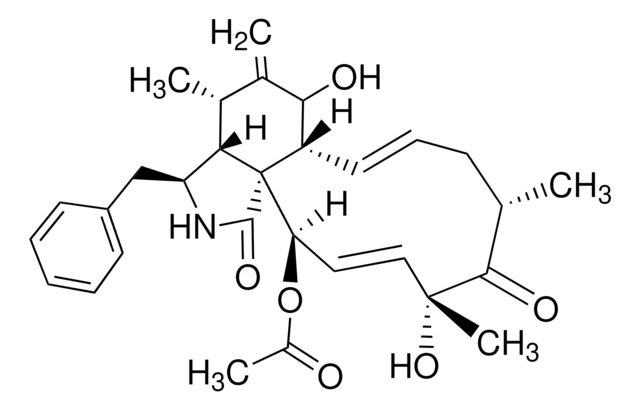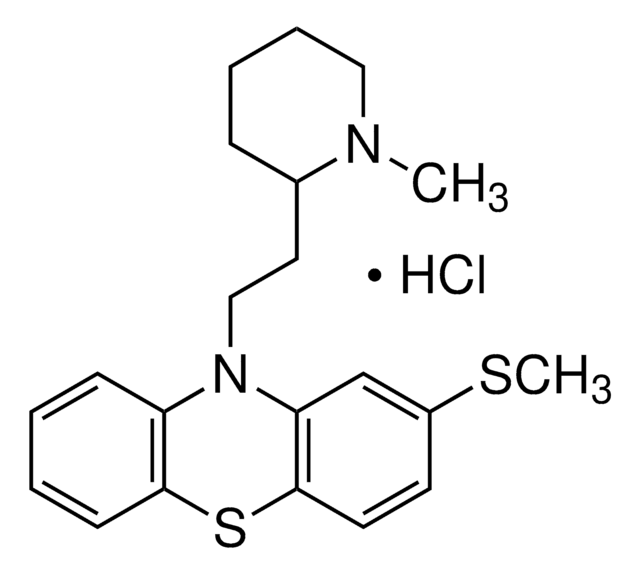Kluczowe dokumenty
C8138
Chlorpromazine hydrochloride
≥98% (TLC), powder, D2 dopamine receptor antagonist
Synonim(y):
2-Chloro-10-(3-dimethylaminopropyl)phenothiazine hydrochloride, CPZ, Largactil
About This Item
Polecane produkty
Nazwa produktu
Chlorpromazine hydrochloride, ≥98% (TLC)
Próba
≥98% (TLC)
Formularz
powder
mp
194-196 °C
rozpuszczalność
water: 50 mg/mL
inicjator
GlaxoSmithKline
ciąg SMILES
Cl[H].CN(C)CCCN1c2ccccc2Sc3ccc(Cl)cc13
InChI
1S/C17H19ClN2S.ClH/c1-19(2)10-5-11-20-14-6-3-4-7-16(14)21-17-9-8-13(18)12-15(17)20;/h3-4,6-9,12H,5,10-11H2,1-2H3;1H
Klucz InChI
FBSMERQALIEGJT-UHFFFAOYSA-N
informacje o genach
human ... DRD2(1813) , DRD3(1814) , DRD4(1815) , HRH1(3269) , HTR2A(3356)
Szukasz podobnych produktów? Odwiedź Przewodnik dotyczący porównywania produktów
Zastosowanie
- as an antagonists for calmodulin kinase
- as a medium supplement to test its cytotoxic effects in human lung microvascular endothelial cells (HMVEC-L)
- as an inhibitor of clathrin-mediated endocytosis in RAW 264.7 cells
Działania biochem./fizjol.
Cechy i korzyści
Hasło ostrzegawcze
Danger
Zwroty wskazujące rodzaj zagrożenia
Zwroty wskazujące środki ostrożności
Klasyfikacja zagrożeń
Acute Tox. 1 Inhalation - Acute Tox. 3 Oral
Kod klasy składowania
6.1A - Combustible acute toxic Cat. 1 and 2 / very toxic hazardous materials
Klasa zagrożenia wodnego (WGK)
WGK 3
Temperatura zapłonu (°F)
Not applicable
Temperatura zapłonu (°C)
Not applicable
Środki ochrony indywidualnej
Eyeshields, Faceshields, Gloves, type P3 (EN 143) respirator cartridges
Wybierz jedną z najnowszych wersji:
Masz już ten produkt?
Dokumenty związane z niedawno zakupionymi produktami zostały zamieszczone w Bibliotece dokumentów.
Klienci oglądali również te produkty
Nasz zespół naukowców ma doświadczenie we wszystkich obszarach badań, w tym w naukach przyrodniczych, materiałoznawstwie, syntezie chemicznej, chromatografii, analityce i wielu innych dziedzinach.
Skontaktuj się z zespołem ds. pomocy technicznej